Born out of a deep love for an art form that is uniquely inclusive, visceral, and accessible, Ballet Des Moines has served the Central Iowa community for over 60 years.
HISTORY
1965 - 1997
The first iteration of the company, Des Moines Civic Ballet Company, was founded by Mary Joyce Lind in 1965, consisting of ten female dancers. The company presented Des Moines’ first locally staged performance of The Nutcracker in 1966. In 1978, Artistic leadership was taken over by Jorge Samaniego and the company was rebranded as Des Moines Ballet. In 1982, Stephan Laurent took over artistic leadership, before going on to lead the Butler University dance program for 30 years. Kennet Oberly next took the helm, where he gained international attention for staging a “speculative reconstruction” of August Bournonville’s 1849 ballet Konservatoriet, which had not been seen anywhere in its full form since 1934. In 1990/1991 the company was re-named Ballet Iowa and led by Konstantin Uralsky, under whom the company staged classic and contemporary works and traveled around the country on tour. However, by 1997, years of financial mismanagement came to a head and the company collapsed.
2002 - 2019
The next iteration of the company, dubbed Ballet Theatre of Des Moines, was founded in 2002 by a former Ballet Iowa artist, Julie Grooters, who then turned the organization over to her sister Lori and her husband Serkan Usta, both celebrated dancers with Tulsa Ballet. The couple slowly and diligently built the company back up, wielding an army of volunteers and a staunchly conservative financial strategy to regain footing with funders and the community. They spent the first eight years as a civic - not professional - company, with young local dancers making up the corps de ballet alongside temporary contracts with professionals from Tulsa ballet as the soloists.
In 2012, BDM was ready to transition to a resident company, inviting six dancers to live in Des Moines for a 20+ week season. This marked an important milestone for the organization, and involved a leap from an annual budget of $350,000 to $600,000. For the next ten years, BDM produced three annual productions, one contemporary triple bill in the fall featuring choreographers such as Ma Cong and Ryan Nye, the annual Nutcracker, and an additional story ballet, featuring students from Usta and Grooter’s local dance school.
2020 - 2024
In 2020, faced with a global pandemic and forced closure of most performance venues, the company embarked on a partnership with Iowa PBS, creating a fully digital season of performances that allowed the dancers and staff to keep working when most of their colleagues were unemployed. In 2021, BDM emerged from the pandemic with a renewed focus on world-class artistry and a new Artistic Director. Tom Mattingly, a retired dancer with a glowing professional reputation, left his position as Rehearsal Director for Madison Ballet to lead BDM. For the next four years, BDM experienced record growth on and off the stage, presenting iconic works including George Balanchine and Christopher Wheeldon alongside the most in-demand choreographers of the time, including Jennifer Archibald, Katlyn Addison, and Mariana Oliveira.
This season, BDM will represent 24 dancers, including three apprentices and ten trainees, as well as ten staff members, with a 2025-26 budget of over $2 million. Each season now includes four evening-length theater productions as well as a state-wide summer tour, and the company is regularly presented across the state. In addition to performances, BDM has won numerous awards for its education and outreach programming, which strives to ensure that people from every corner of the community are encouraged and inspired to participate in creative programming that meets them where they are in relevant, engaging ways.
TODAY
With over 100 state-wide partners, BDM has been recognized for its authentic approach to collaboration, which focuses not just on opening doors, but establishing trust-based relationships with community leaders, educators, and communities. Through these partnerships, BDM is reaching nearly 15,000 community members a year, with programs that actively improve academic outcomes, spark career connections, drive economic activity, and improve feelings of belonging and regional pride.






